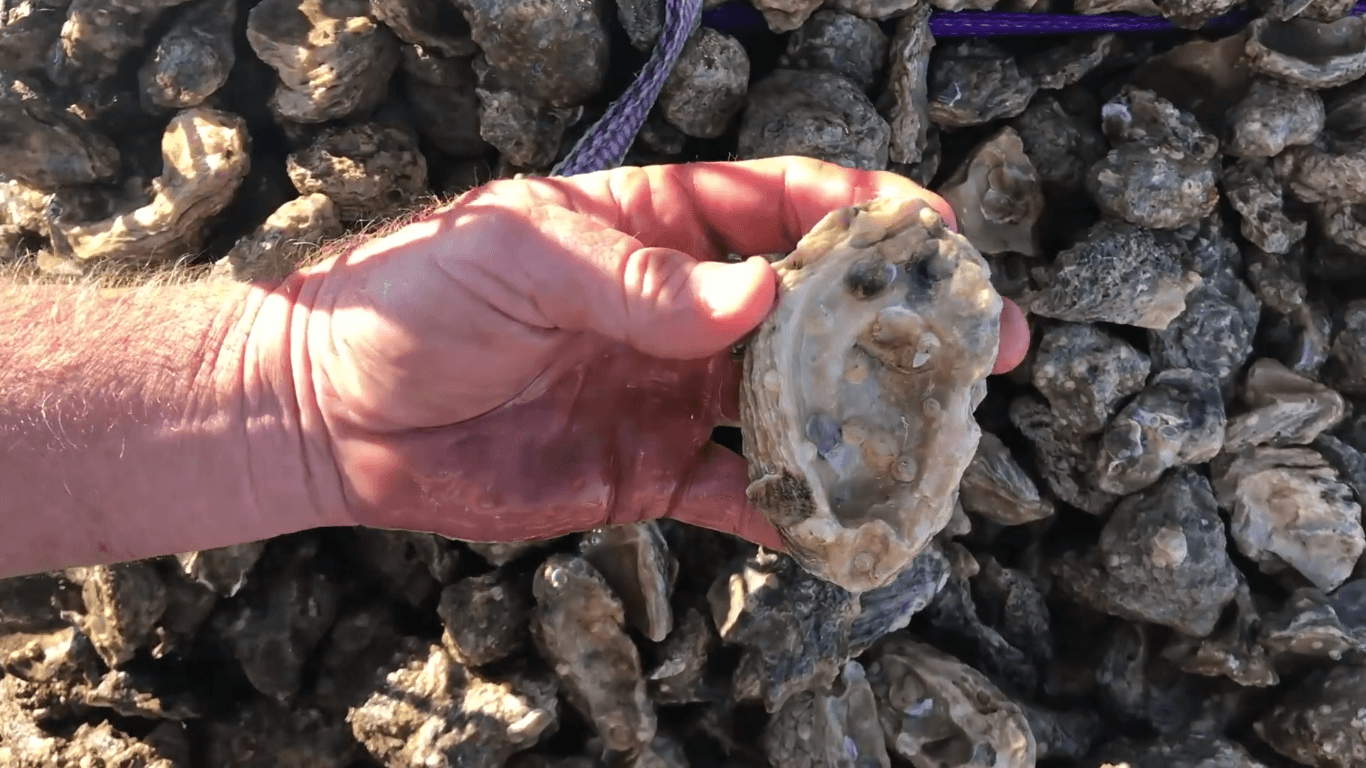

In the second incarnation of the tile experiment, oyster spat were attached to tiles with an epoxy used in the repair of boat hulls. All moved by truck, hand, boat, hand, kayak, and hand to their temporary location on a reef (and then moved back again when the experiment is done). We’re talking 800+ ceramic tiles and 700+ bricks last summer alone! That’s enough to make a path that is ~2 football fields long.
#Baby oyster spat portable#
One type of experiment that we have perfected over the years involves getting juvenile oysters- (either from the field, which can be pretty difficult -as you can see from the first round of our tile experiment, or from a hatchery), and gluing them to portable sections of “reef” (ceramic tiles weighed down by bricks).

Regardless of how oysters decide, there are times when we are also faced with the question of what makes good oyster habitat, or deciding which area is better than another. (Or it could be a sign that people have put a lot of cement blocks in the water in the hopes that oysters will settle and create a reef – that’s how a lot of oyster restoration projects are started.) Some recent research even shows that oysters can detect the sounds of an oyster reef, and then swim in that direction! Maybe these guys are smarter than we think… First of all, they can detect calcium carbonate, the material that makes up oyster shells (and other things) – if there’s lots of calcium carbonate in an area, that could be a good sign that it’s an oyster reef. It turns out that oyster larvae (baby oysters swimming in the water) can use a number of “cues” to help them in the house-hunting process. Clumps of attached oysters form a crucial coastal habitat. Spat grow into mature oysters with a hard shell, fused with the oyster on which they originally landed. George Island reef, had been settled by multiple young oysters called spat. This oyster shell, harvested from an intertidal St. Talk about a tough decision! That’s what oysters have to do, because once they settle down and glue themselves to their location of choice, they don’t have the opportunity to move around any more.

(As anyone who has me in their address book knows, “permanent” is a very relative term – I have changed residences a lot over the last 15-20 years!) But imagine you had just one shot – one, for your whole life – to decide where to settle down. Which neighborhood has the best schools? The best coffee shop? Friendly neighbors? Low crime? My solution was to find something short-term while I scope the place out some more, and then I can decide on something more permanent. This can be a touch decision, especially when you’re in a new city or town. I recently moved and was faced with the dilemma of finding a place to live. We’ll also continue to follow David’s crew in Apalachicola, Hanna and Stephanie, as they research the oyster fishery crisis.ĭr. Stay tuned over the following weeks as they unravel the relationships between predators and prey on oyster reefs and their neighboring coastal ecosystems. But what if oysters are too scared to eat the nutrient fed plankton they need to survive? David and Randall take us another step closer to understanding the Ecology of Fear, examining oysters’ choices and how their behavior affects the important habitat they create. David Kimbro broke nutrients and oysters down for us.


 0 kommentar(er)
0 kommentar(er)
